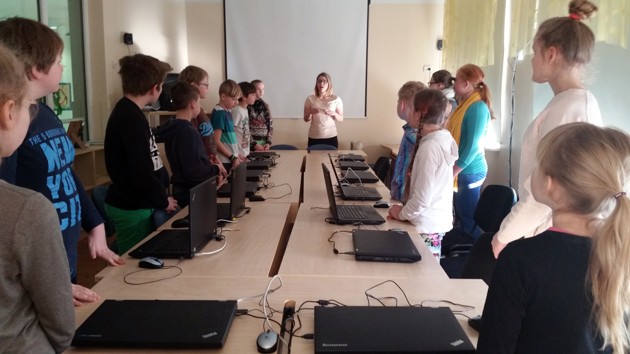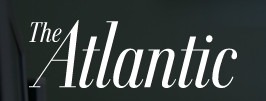But there’s an overlooked member of the list: Estonia. Even as educators from around the world flock to Finland to discover its magic formula, Estonia, just a two-hour ferry ride away, has not aroused the same degree of interest.
That could change if the country remains on its upward trajectory. In 2012, Estonia’s 15-year-olds ranked 11th in math and reading and sixth in science out of the 65 countries that participated in an international test that compares educational systems from around the world (called the Programme for International Student Assessment, or PISA).
In addition to beating out western nations such as France and Germany and essentially tying Finland in math and science, Estonia also had the smallest number of weak performers in all of Europe, about 10 percent in math and reading and 5 percent in science.
While there is less income inequality in Estonia than in the United States—and, with 1.3 million people, the country is significantly smaller—the Baltic nation also has its share of cultural diversity. When it achieved independence from the Soviet Union 25 years ago, Estonian became the official language and the language of school instruction. Yet about a fifth of its students come from families that still speak Russian at home, and they have historically lagged behind their native speaking counterparts on tests such as PISA.
As a result of this commitment, Estonia’s performance on PISA isn’t in spite of its poor students; it’s in no small part because of them.
“We have been able to keep education very even,” said Jürgen Ligi, the Estonian minister of education. “It has worked.”

On the 2012 PISA math exam, more than a third of low-income students were among the country’s top performers. Estonia had the second smallest gap in performance between its poorest and richest students out of all participating countries known as the Organization for Economic Cooperation and Development (OECD). Students in its lowest income quartile scored about as well as American students in the second highest income quartile.
Marc Tucker, president of National Center on Education and the Economy in Washington, D.C., visited Estonia last year to find out what they’re doing right. He said that after the fall of the Iron Curtain other former Soviet satellites, such as Hungary and the Czech Republic, transitioned to a system preferentially suited to the needs of its elites. Estonia, however, kept giving equal opportunities to students of all backgrounds.
“What [we] saw in Estonia was not a new education system, it was an old one,” Tucker said. “By every account they did not change the system after the wall came down…. It’s hardly surprising they continued to get great results.”
There are many factors that may contribute to Estonia’s success on PISA beyond their focus on equality. Education continues to be highly valued. Teacher autonomy is relatively high, which has been shown to be related to better test scores. Teachers stay with the same students in grades one to three – or sometimes even up to sixth grade – allowing deep relationships to develop. Many officials and educators say teachers here are good at supporting students and preventing them from getting off track, in contrast to the U.S., where teachers spend a lot of time intervening to help students who have fallen behind.
But many educators said that an emphasis on giving everyone a similar educational experience is a crucial piece of the puzzle. “We really follow the straight line that everyone is equal,” said Karin Lukk, principal of Tartu Kivilinna Kool, a grade 1-9 school in Estonia’s second largest city. “It doesn’t matter what kind of family you come from, you can still achieve a lot.”
That approach starts at the very beginning. Early childhood education is free beginning at 18 months (when paid maternity or paternity leave ends). Everyone gets free lunch, meaning teachers might not know exactly what a child’s background is. College is free. Private schools, although an increasing threat to public education, are still a relatively small slice of the educational system. Estonian schools are often economically integrated, so poor and rich students are frequently in the same classrooms.
By comparison, in the United States, students do not get the same educational experience. Quality of childcare and schools vary widely depending on income. Families with the most money often have access to the best child-care centers and most elite colleges. Schools are often segregated both by race and income, with poor students often having fewer resources and less experienced teachers.
But for students in the lower tiers, other research suggests tracking isn’t helpful. In a 2015 study, researchers analyzing PISA results and responses on student surveys about what kind of math topics they are taught have discovered that students from less affluent backgrounds in all participating countries are taught less difficult math and typically perform worse on the assessment. They arguethat “the weaknesses of their math coursework actually keeps [low-income] students from catching up.”
Estonia has the smallest gap out of OECD countries between low- and high-income students in the kind of math they are taught and one of the smallest gaps in performance. That 2015 study attempted to separate out how much the instruction a student receives in school contributes to their scores. If home life or other factors beyond a school’s control were the sole determinant, researchers would have found no relationship. Instead, they found that, on average, in OECD countries, the students’ diverse educational opportunities explained 33 percent of the difference in scores between low- and high-income students. In the United States it was 37 percent, while in Estonia it was just 16 percent.
According to the paper’s co-author William Schmidt, the study’s takeaway is that “inequality [in test scores] due to schooling in the U.S. does not have to be, as there are other countries in which the percentage of such inequality is much lower.”
Estonian schools follow a national curriculum that dictates what students must cover in each subject each year through ninth grade. At that point, students decide whether to go to upper secondary school for three more years, where they focus on academics, or to vocational school to prepare for a specific career. Different schools may require different entrance exams, but students who want to go to upper secondary school almost always are able to do so, according to officials and educators.
Most students, roughly two-thirds, select upper secondary school, according to the Estonian Ministry of Education and Research. In larger schools, they may also pick an area study – like science and mathematics or humanities. That choice is based on interest, though, not prior test scores or grades. And students still take a common set of courses that makes sure students have basic skills in all subjects.
Yet it’s up to the school to figure out how all the students attain this common skill set. Estonian schools are free to separate students however they want as long as they learn the same material in each grade. In the late 1990s, educators at Tartu Kivilinna Kool split up their students into three groups for math classes: high, average and low. At each level, the school’s 950 students followed the same basic curriculum, but they moved at different speeds or, in some cases for the more advanced students, dove deeper into the material. It was a departure to what they’d done under the Soviet system.
But by 2008, they abandoned the practice. “It didn’t work,” Lukk said. The lowest group “didn’t develop at all. They just vegetated.”
On a sunny March day, Konguta’s 15 fifth graders were warming up for a math lesson in the school’s small computer lab. They logged in to their laptops and signed on to a program to practice addition. Soon the only sound in the room was that of mouse clicks as they entered answers.
One girl’s screen started as basic as possible with 1+1. Within two minutes, she was up to problems like 2589 + 1233.
The school makes use of drills like this so students can practice calculating in their heads. But teachers also try to plan lessons that connect math to real life. Stairs to the lower level of the school are marked with descending negative numbers – during the winter they use them to mark the temperature. One wall is covered with charts: results of a poll of students’ favorite bread or tallies of how many times different birds have been seen in the garden.
The school generally does well on the national exam its students take at the end of sixth grade, said English teacher Katrin Libe. Those results aren’t made publically available, though; Estonian students are tested once every three years and school level results are only published at the end of 12th grade.
And while Estonia’s schools are currently benefiting from adhering to the old system, there are also changes creeping in that might disrupt its academic focus. In Konguta’s teachers lounge, Libe and math teacher Pille Granovski spoke about a recent conference they attended, where a psychologist suggested early education should focus more on emotional and social skills than starting to lay the groundwork for academics. The school has an early childhood center attached to it, which enrolls students as young as 18 months old.
“I think the learning process is quite playful [there],” Libe said.
“I don’t know,” Granovski responded. “It is playful but you still have to start learning very early.”

Educators all over Estonia are grappling with new teaching ideas and philosophies, trying to reconcile them with the more rigid system they went through. This discussion is not unlike conversations in America as most states shift to the Common Core State Standards, which have led to major changes in how teachers structure their lessons to demand higher order thinking.
Estonia’s traditional educational system still often favors more teacher-centered classrooms and emphasizes learning facts over developing soft skills. It’s generally served the country well when it comes to testing, so there is a reluctance to change entirely.
“My problem is whether we can keep [the test results] when stressing creativity,” Ligi said. “Will it be in some conflict?”
But throughout the country, policymakers and educators are talking about the need to produce students who can do more than score well on a test, perhaps go on to become entrepreneurs and creative leaders. Educators are also concerned that focusing on the average student and bringing up low-achievers to that standard comes at the expense of pushing gifted students further.
Yet it can be hard to get teachers to give up on the traditional ways, let alone attract good recruits for the teaching profession when pay is still among the lowest in Europe. Even though teacher training has been completely overhauled at Tartu University to place more emphasis on how to teach students critical thinking and communication and less on content knowledge, officials there say it’s taking a while to trickle down into the classroom.
And a rise in the charts hasn’t bred compliance, among teachers or students. InPISA student surveys, two-thirds of Estonian students said they are happy at their school, one of the lowest levels in OECD countries.
Estonian PISA Coordinator Gunda Tire says Estonians are complainers by nature, so they’ll respond differently to a question about happiness than, say, Americans would. (Nearly 80 percent of U.S. students said they were happy at school on the survey.)
That cultural attitude leaves them with a constant drive to keep improving their schools. “Nothing is ever good enough,” Tire said. “No one would say the school system is doing fine.”

0 Comments